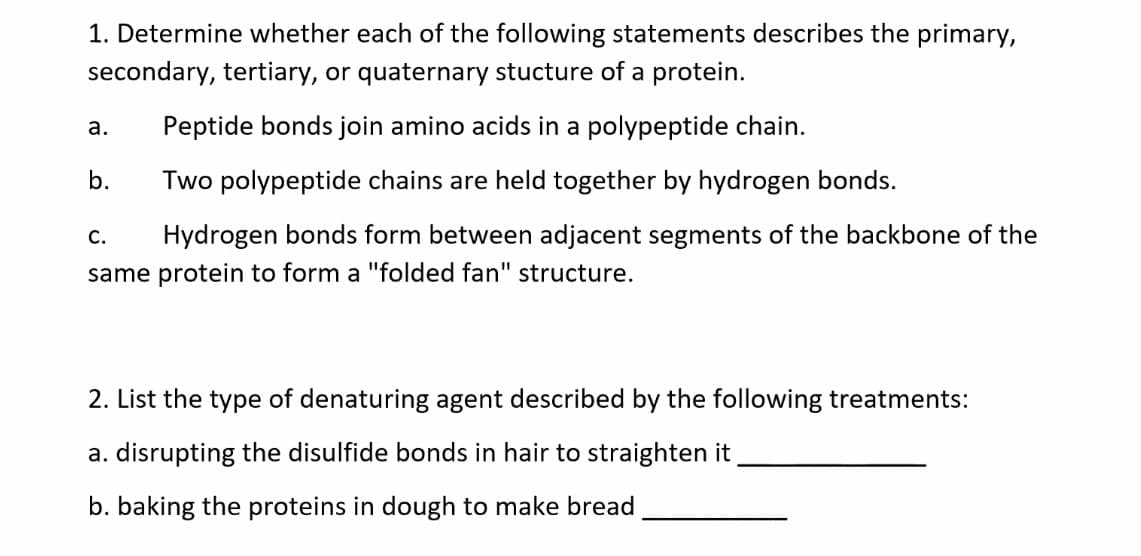1. Determine whether each of the following statements describes the primary, secondary, tertiary, or quaternary stucture of a protein. а. Peptide bonds join amino acids in a polypeptide chain. b. Two polypeptide chains are held together by hydrogen bonds. С. Hydrogen bonds form between adjacent segments of the backbone of the same protein to form a "folded fan" structure. 2. List the type of denaturing agent described by the following treatments: a. disrupting the disulfide bonds in hair to straighten it b. baking the proteins in dough to make bread
Neutral Amino Acids
Amino acids which do not have any charge on them are neutral amino acids.
Globular Protein
The globular proteins refer to the shape of protein specifically spherical in nature apart from spherical form fibrous, disordered and membrane-bound proteins exist. These globular proteins are miscible in water and form a colloidal solution rather than other types which might not exhibit solubility. Many classes of the fold are found in globular proteins, which render them a sphere shape. Globular fold containing proteins usually are referred to by the term globin.
Dimer
Dimers are basic organic compounds, which are derivates of oligomers. It is formed by the combination of two monomers which could potentially be strong or weak and in most cases covalent or intermolecular in nature. Identical monomers are called homodimer, the non-identical dimers are called heterodimer. The method by which dimers are formed is known as “dimerization”.
Dipeptide
A dipeptide is considered a mixture of two distinct amino acids. Since the amino acids are distinct, based on their composition, two dipeptide's isomers can be produced. Various dipeptides are biologically essential and are therefore crucial to industry.

Trending now
This is a popular solution!
Step by step
Solved in 2 steps









